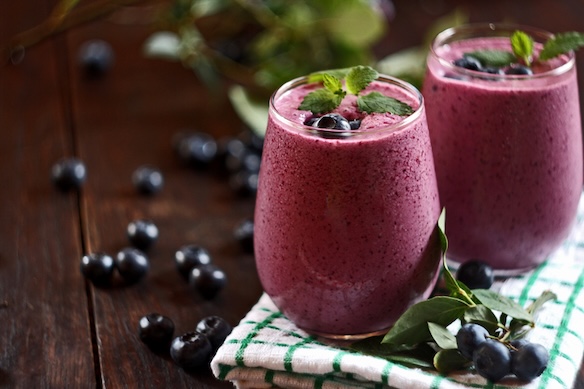When we hear of a new “diet”, our ears tend to perk up and curiosity sets in.
Considering that an estimated 45 million Americans go on a diet each year, it’s no wonder that this topic is always trending.
And if you’re like many of us, you may have tried different diets in the past with little to no luck or you just got plain sick of them. Certain health factors may have even stopped you from trying them.
The fact is, some diets suit our lifestyles and health factors while others don’t.
That’s why it’s important to learn as much as you can about any diet you may be considering, and take into account your unique set of circumstances before committing. And, if you have health concerns, it’s important to check with a medical provider or dietician to make sure the diet is right for you.
The Paleo Diet
One of the most popular diets these days is the paleo diet or “caveman” diet. And while you’ve probably heard of it, you may be wondering what it’s all about. You may even have asked yourself:
What exactly is the paleo diet? What are you allowed to eat?
What are the risks? And, are there any health risks or benefits to it?
To help you get a better sense of what it’s all about, we’re going to dive into these questions.
Keep reading to learn more!
What is the Paleo Diet?
The paleolithic diet (paleo diet) is a diet that's supposed to copy the way our ancestors ate during the Paleolithic era.
This era dates back more than 2 million years ago when our ancestors were hunters and gatherers.
Advocates of the paleo diet say we should eat foods that our ancestors ate during this time because our anatomy and genetics have not changed despite the relatively recent agricultural revolution.
This means the foods consumed with the paleo diet are foods that can be found in nature.
Our ancestors hunted, fished, and gathered plants for food. With the paleo diet, the idea is to mimic this way of eating. One of the main considerations with this diet, as opposed to others, is that it focuses more on health than weight loss.
While most people can lose significant weight on this diet, the main focus is on gut and whole body health in order to reduce inflammation.
What can I eat on the paleo diet?
Paleo eliminates the consumption of legumes (like beans and peanuts), grains, processed sugars, and dairy. Many of these foods are common in the western diet.
Foods consumed on the paleo diet include:
Fish
- Nuts and seeds
- Fruits and vegetables
- Lean meats (grass-fed or wild game)
- Healthy fats
The practice of agriculture and large-scale farming introduced many new foods into our diets. For advocates of the paleo diet, the theory is that since this was such a late and rapid change in our diet as a species - our bodies weren't able to adapt quickly enough which has led to a rise in obesity and disease.
According to the Mayo Clinic,
“This mismatch is believed to be a contributing factor to the prevalence of obesity, diabetes, and heart disease today.”
Is paleo right for me?
Cutting out certain food groups and limiting food choices can present risks. For others, it’s just not feasible due to the costs of “whole foods.”
For example, the diet isn’t recommended for people with conditions or beliefs that stop them from eating meat. Allergies, social beliefs, and even location could make it difficult to eat enough protein for your body's needs.
If you’re vegan or vegetarian, paleo can also be extremely difficult as the majority of the diet's protein comes from meats.
Are there risks in following a paleo diet?
Every diet has its own set of risks and benefits. Understanding them is critical to determining if the diet is right for you.
With the paleo diet, there’s a risk of consuming too much protein and saturated fat. This can increase the risk of different cancers as well as heart and kidney disease.
There’s also the risk of having deficiencies in both Vitamin D and calcium. Both are important for healthy bones.
Over time, the diet could increase low-density lipoprotein “bad” (LDL) cholesterol causing an increase in risk for heart disease.
The absence of whole grains and legumes may also present a problem as they are both good sources of fiber, vitamins, and other nutrients.
Most of these risks can be avoided by making sure you are eating the right foods in the right balance, but this can be a challenge for some. Getting the help of a nutritionist or dietician knowledgeable about the paleo diet and your risk factors can be a huge help.
Are there any health benefits to eating paleo?
For some people, the paleo diet could be ideal.
In fact, the paleo diet has been found to improve total and “bad” LDL cholesterol levels, blood sugar levels, and BMI (body-mass index). It’s also shown improvement in biomarkers that link to type 2 diabetes, metabolic syndrome, obesity, and cardiovascular disease.
In randomized clinical trials, when compared with other meal plans like the Mediterranean diet, the paleo diet shows several benefits such as:
- Lower triglycerides
- More weight loss
- Improved glucose tolerance
- Better blood pressure control
- Increase in appetite management
High levels of triglycerides can contribute to the risk of heart disease, stroke, and heart attack.
And better glucose tolerance and blood pressure control may help you lower the risk of diseases such as diabetes and heart disease.
The absence of refined sugars, processed foods, and carbs with the paleo diet increases the odds of you losing weight. And, because the diet is high in protein and healthy fats - it's very filling. This leads to better appetite control.
Paleo Diet Explained - Closing Thoughts
Just like any other diet, the paleo diet comes with its risks and benefits.
If you’re unsure if it’s right for you - always check with your medical provider, especially if you have health conditions or other concerns.
With a focus on fish, lean meat, and naturally grown fruits, vegetables, and nuts. The diet is high in both protein and healthy fats.
Not consuming any dairy, grains, sugar, or processed foods may help you to lose weight. And, it could also lower your risk of different diseases.
But, the diet may be hard to follow long term due to dietary restrictions and limitations. Plus the expensive cost of eating meat along with naturally grown fruits, vegetables, and nuts may also make it hard.
Just remember, not every diet is suitable for everyone. Be sure to think about your goals, lifestyle, and health factors before deciding if it’s right for you.
If you do know someone who’s interested in the paleo diet and learning more about it - share this article with them!











